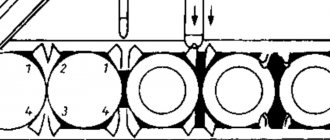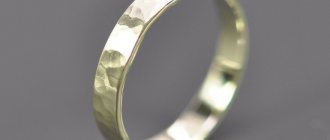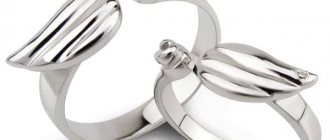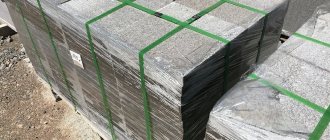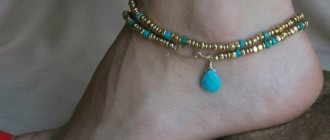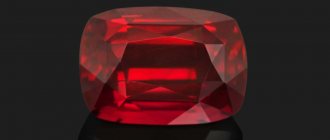Post updated: May 25, 2020
Gold as a precious metal has been used by humanity throughout its history. Its value is determined by the difficulty of extraction: it is difficult to find metal in nature, and even more difficult to extract it from rock. The history of mining the yellow metal has gone through several “gold rushes”, when prospectors in search of gold moved to new territories in North America, Australia and Canada in search of the precious metal and a better life. Similar events were typical for Russia in the 19th and 20th centuries, when the Siberian deposits and Lena gold mines were being developed. How is gold formed and how rare is the metal in nature?
What is a gold nugget
A gold nugget is an opaque piece of native gold (ore rock) enriched with minerals. In terms of its chemical composition, it is a frozen natural solution of a compound of silver, precious metal and impurities.
Native gold contains up to 10% of ores found in rock deposits. Combines with iron, copper, platinum, iridium, osmium. The shade of the nugget depends on them.
View this post on Instagram
Posted by JEWELRY • MAGADAN • (@zoloto_999_magadan) Nov 16, 2015 at 5:18 PST
Description of native gold:
| Options | What it looks like in nature |
| Dimensions | Nuggets include a single piece of gold over 2 grams, the weight sometimes reaches more than 100 kg. Formed in the form of dust (sand), grains less than 5 mm. |
| Color | Yellow (lemon to amber), yellow-red, silver-white, possible greenish tint |
| Color of crushed nugget | Yellow |
| Surface | Dull or bright, with a metallic sheen, smooth or uneven, there are notches, notches. Sometimes covered with another rock (called “shirted”) |
| Form | Bizarre, reminiscent of geometric shapes, plates, animals, feathers, branches and other objects |
| Hardness | Soft, corresponds to 2.5–3 points on the Mohs scale |
| Try | 800–950 (high-quality native gold). The more impurities, the lower the sample |
Often gold is connected to stones because it was formed at the same time as them or crystals began to grow around the precious metal. It occurs inside the mineral, on its surface, or lies separately from the destroyed gem.
There are stones with yellow shiny inclusions, reminiscent of gold. They don't actually contain precious metal.
To see what nuggets look like:
How is it different from pyrite?
Pyrite is a shiny mineral similar to gold. The gem is straw-colored, but when crushed, the powder turns out not yellow, but green-black.
Hardness also varies. For pyrite it reaches 6.5 Mohs points, and for the precious metal it does not exceed 3.
It also differs in cleavage. When native gold is struck, it becomes deformed. Pyrite crumbles into pieces and dust, and can create sparks.
Review of the largest finds
How much do the largest nuggets mined from the depths weigh? Depending on the luck of the miners, you can find ingots whose weight varies from several grams to tens of kilograms.
In the world
In world practice, the largest nugget is the “Holterman plate”. It was discovered in 1872 in Australia at one of the quartz mines. The weight of the found cobblestone was 250 kg, of which 93 kg was pure gold. It was later melted down to make jewelry.
Since the block for the most part did not contain native gold, but quartz inclusions, scientists are still arguing whether it can be called a nugget. Many agree that it was just a piece of vein. However, even in this case, it remains the largest in the history of gold mining.
A few years earlier, in 1869, the record holder was the “Welcome Stranger,” which was found right on the road. Two fellow miners returning from work discovered a lump of native gold in the mud where their cart was stuck.
Weighing showed that the weight of the ingot is 71 kg. It is noteworthy that to determine the mass of the block it had to be cut into several parts due to the lack of suitable scales.
No less remarkable was the discovery of a piece of native gold in California (USA). While digging the grave of his comrade and colleague, a local town prospector came across a large cobblestone. After extracting the stone to the surface, it turned out that it was in fact native aurum. Wanting to pay his last respect to his comrade, the miner named the 36 kg nugget after him - Oliver Martin. Subsequently, the stone was sold for 22.7 thousand dollars.
In Russia
Like Japan, Russia is considered a country rich in gold, but most of it is represented by medium and small placers. However, there are also impressive representatives. The most famous of them is the Russian Precious Triangle. The native block was discovered in 1842 in the Southern Urals. In addition to its size, the stone has one more feature - it was found by an 18-year-old guy in a mine that until that moment was considered completely exhausted.
Another representative of especially large native gold ingots was discovered in 1895. His weight was 31 kg. The mass of subsequent finds did not exceed 20 kg.
How to determine the presence of precious metal in a stone
The authenticity of native gold is determined in the field or at home using a folk method.
What to do:
- If the golden inclusion under the mineral layer is barely noticeable, the stone is chipped or broken. When struck, the precious metal does not crumble.
- Having provided access to the inclusion, its surface is scratched with a steel needle.
- The scratched area is examined through a magnifying glass. The gold-containing element will not be destroyed; lines will remain on it where the needle is pressed.
The presence of gold dust in a stone is checked using iodine. An alcohol tincture from a pharmacy is suitable.
What to do:
- Grind the mineral into powder.
- Place the mineral powder in a jar or other container.
- Pour iodine into the powder and stir until smooth. Wait until a precipitate forms.
- Immerse a strip of white paper towel or filter paper (2 cm wide) into the liquid so as not to stir up the sediment. Immediately remove and dry at room temperature.
- The action of the previous paragraph is repeated 4–7 times.
- After drying, the paper is placed on a heat-resistant saucer and set on fire. If the stone contains precious metal, the ash will be purple in color.
There are few stones containing gold-bearing inclusions. The precious metal is found in granite, quartz and quartz diorites. Not all shiny minerals are classified as valuable specimens. But varieties of pyrite, sphalerite, galena and stibnite often lie next to the precious metal.
See an alternative option for finding gold:
Chemical and physical characteristics
Gold belongs to the platinum group metals. It does not oxidize under the influence of oxygen, maintaining its structure and appearance. It is a very dense and heavy metal. Due to its softness and plasticity, it is widely used in the production of jewelry and gold leaf plates for the domes of Orthodox churches. The color of the metal changes depending on the impurities that predominate in it. The most common elements are silver and copper. The presence of copper gives a reddish tint, and the presence of silver gives a pale yellow color.
History of origin and deposit
There are several theories about the origin of gold on Earth. The most likely hypothesis involves the presence of metal in the matter that formed the planet. This explains the uniform distribution of metal over the surface, the presence of gold-bearing sand and nuggets. According to scientists, the metal is formed in the bowels of the earth under the influence of colossal pressure and high temperatures. Its release to the surface is explained by earthquakes and volcanic activity of the planet.
It is mined on all continents except Antarctica. The richest deposits are located in Russia and Australia. According to the mechanism of formation, the amount of extracted raw materials and technological processes, deposits are primary and secondary.
Indigenous or primary formations appear in mountainous areas after volcanic eruptions and the release of magma to the surface. Quartz veins contain large amounts of gold in the form of tiny grains. The amount of precious metal is determined by the following factors:
- chemical composition of the rock;
- magma freezing time;
- weather conditions and atmospheric influences;
- conditions and intensity of eruptions;
- geological and physical nuances.
Primary development came about as a result of technological advances in the twentieth century, allowing humans to penetrate deep into the earth's crust. Geological studies have shown that there are rich gold-bearing veins in the depths.
The nature of secondary deposits is due to the destruction of barren or semi-barren rocks that contain gold. This is due to the influence of the following physical and chemical processes:
- abundance of groundwater;
- precipitation;
- temperature changes;
- vital activity of microorganisms.
In coastal areas, gold placers can appear as a result of the washing away of solid formations and their gradual transformation into sand. Gold is an inert and heavy metal that does not react with other chemical compounds. Due to this, it accumulates in any relief irregularities, bottom sediments, shores of lakes and rivers. Placer deposits are located close to the surface under a thick layer of waste rock.
A distinctive feature of secondary deposits is the possibility of metal migration and the formation of new deposits. The process is facilitated by natural changes in the landscape with the emergence of root gold-bearing deposits to the surface.
Types of native metal
There are two types of native gold found in nature: placer metal and nuggets. Placer metal grains have several advantages over nuggets. Unprocessed particles in placers do not require additional processing to separate them from the main ore. Therefore, small grains represent the purest product.
The extraction of nuggets is associated with difficulties due to their deep occurrence in the subsoil and the search for deposits. In addition, the mined metal must be purified from the minerals in which it is located. These are solid formations weighing more than 5 grams. Nuggets come in various shapes and sizes.
How are gold nuggets formed and where can you find them?
There is no evidence of exactly how the natural precious metal was formed. Previously it was believed that it increased due to crystallization, as during the formation of granite. Most scientists recognize the original molten state of native gold with the same composition as now. Perhaps the process began during volcanic eruptions, then the metal cooled in the cavities of the rock.
The main deposits of gold nuggets in Russia:
- Natalkinskoye (Omchak river, Magadan region);
View this post on Instagram
Posted by magan15 (@magan153689) Oct 14, 2022 at 11:04 am PDT
- Nezhdaninskoe (Yakutia);
View this post on Instagram
Publication from Industry of Russia and the World (@tekkos_russia) February 10, 2022 at 5:13 PST
- Olimpiadinskoye and Blagodatnoye (Krasnoyarsk Territory);
View this post on Instagram
Posted by Ivan (@ivankrivogov) Oct 28, 2022 at 6:34 am PDT
- Darasunskoe (Chita region).
In the Urals, native precious metal abounds in the Tash-Targanka river (near Miass), Moss swamp, Bolsheshaldinskaya placer and quarries in the Sverdlovsk region. The Kajaran and Sotskoe deposits are famous in Armenia.
A metal detector and a mini-dredge (a device for washing the soil) will make the search easier.
Which metal detector is better to take for a search:
- pulse;
- multi-frequency (from 6 to 60 kHz);
- with the ability to work underwater (waterborne).
In equipment reviews, experts highlight the Minelab Eureka Gold and Nokta Fors Gold metal detectors.
It is advisable to search not far downstream or along the perimeter of the quarry. In these zones there is a higher probability of finding nuggets. In swampy and excessively wet soils, it is recommended to do blind mole. That is, to drain water, holes with a diameter of 6–8 cm are drilled to a depth of 50 cm and with a frequency of 1 piece per 1–2 m.
Story
Native gold is the very first rock that humanity became familiar with. In ancient times, this stone was found in river valleys. The glitter of gold was noticed back in Paleolithic times. At this time, people realized that this breed was not suitable for making household items. Therefore, for many years, gold was simply looked at. It was perceived as an unusually beautiful material. Only at the turn of the III-IV centuries. BC. gold began to be used in the production of jewelry.
Somewhat later, native gold began to act as an object of exchange. At the beginning of the 19th century, gold-bearing placers in the Urals were discovered. In the second half of this century, the “gold rush” began. This phenomenon occurred in Alaska. A lot was found, but even more sand was dug up in search of this metal.
Gold items were discovered during excavations of the most ancient civilizations of the Neolithic era in the mountains of France, in Celtic burial grounds, in the predynastic monuments of Egypt, among the most ancient cultural layers in India and China. The refining of gold and its separation from silver began in the 2nd half of the 2nd millennium BC. The first studies were related to the development of alchemy, the main goal of which was to create gold from base metals.
Methods for extracting precious metal from stones
Refining enterprises are engaged in the extraction of native gold from stone.
Industrialists use three methods:
- Dry. The mineral containing native gold is crushed to dust, then the powder is treated with chlorine under pressure.
- Chemical. Mineral powder is calcined at temperatures above 500 ºC, then processed with nitric and hydrochloric acids (HNO3 + 3 HCl).
- Electrolysis. The powder is mixed with hydrochloric acid, and a current is passed through the raw material (the precious metal precipitates).
The native gold is then purified many times to improve its purity. At the end it is melted and poured into ingots.
Watch the video for ways to extract stone:
Crystal optical properties in thin preparations (sections)
In polished sections, in reflected light, golden-yellow, shiny. Reflectivity. exceptionally high, depends on the Ag content, for pure gold (in%): for green rays 47.0, for orange 82.5, for red 86. Isotropic. The refractive index (according to Kundt) in prisms for red light is 0.38, for white light 0.58, for blue light 1.00; in reflected light (according to Drude) for Na light 0.366, for red 0.306; the absorption coefficient for Na light is 7.71, for red light 10.2. The ability to polish in small deposits is very good; in larger deposits, even with thorough polishing, scratches from the smallest particles of abrasives and small pinholes remain. 'Structures of replacement and cementation of various minerals with gold are observed.
What to do if you find a gold nugget
Native gold is the property of the state. For legal production, a license is issued. Next, the raw materials with precious metal are supplied to refineries.
If a nugget is found by chance, and this often happens at deposits, it must be handed over to the local tax authority. The finder will receive a 20% reward from the value of native gold (Article 229 of the Civil Code of the Russian Federation). Income and pension taxes will be withheld from the amount, and the remaining money will be transferred to a bank card.
Watch vlogs of how amateurs search for precious stones:
Crystal structure
Face-centered cubes. Especially for low-grade, it is characterized by a variety of growth forms, it is usually in the form of skeletal crystals, dendrites, threadlike and twisted-filamentary crystals. Streak-like and irregular lump-like, “hooked” discharges are widespread; Their surfaces often contain imprints of crystals of other minerals, the aggregates of which included accumulations of native gold. Etching reveals the crystalline granular structure of the gold particles.
Based on particle size, they are distinguished as fine (less than 1-5 microns), dust-like (5-50 microns), fine (0.05-2 mm) and coarse (more than 2 mm). Clusters weighing more than 5 g are clearly distinguished by their size and are classified as nuggets. The largest nuggets discovered were not preserved; The nuggets “Holterman Plate” (285 kg along with the remains of the rock) and “Welcome Stranger” (71 kg) found in Australia were melted down. In Russia, the eastern (Ural, Lena River basin) and other regions are rich in nuggets (the largest nugget found in the Urals weighs 36.2 kg). Valuable nuggets are preserved by states as rarities.
Gold has the highest ductility and malleability compared to all other metals. It is easily flattened into the thinnest leaves, so 1 gram can be flattened into the thinnest sheet with an area of 1 m2, which is used to obtain gold leaf and melted gold for gilding.
Native is the main form of gold found in nature. It is concentrated in hydrothermal deposits forming gold ores, unevenly distributed in fractured vein quartz and in sulfides - pyrite, arsenopyrite, pyrrhotite, etc. In essentially sulfide ores, native gold is finely dispersed. During the oxidation of ores on the earth's surface, fine native gold is partially dissolved and redeposited; in some cases it enriches the upper parts of ore bodies. The processes of their destruction lead to the release of particles of native gold and their accumulation in placers; moving with water flows together with other plastic material, the particles become rounded, rounded, deformed, and partially recrystallized; As a result of electrochemical corrosion, a thin shell of high-fine gold is formed on them, which leads to a general increase in the standard of native gold in placers.
The mobility of the mineral in geological processes is mainly associated with the influence of aqueous solutions. The most realistic occurrence of gold in hydrothermal solutions is in the form of various simple and mixed mononuclear Au1+ complexes. These include hydroxyl, hydroxochloride and hydrosulfide complexes. At elevated levels of antimony and arsenic, the formation of heteronuclear complexes of gold with these elements is possible. Transfer of gold in atomic form is possible. In low-temperature hydrothermal conditions, as well as in surface waters, migration of gold in the form of soluble organometallic complexes is possible, among which the most likely are fulvate and humate complexes. Under hypergene conditions, gold migration occurs in the form of colloidal solutions and mechanical suspension. Gold is characterized by a variety of factors leading to its concentration and fixation. Along with changes in temperature, pressure and pH, a change in the redox potential of the medium plays a major role in the concentration of gold. Co-precipitation and sorption play a significant role in gold concentration processes.
How are deposits developed?
Gold mining is a long and labor-intensive process. Today, like hundreds of years ago, gold is sought through numerous trials and errors. This requires not only professional knowledge of geology and the ability to conduct terrain reconnaissance. Observation, experience and even an intuitive approach help in the search.
In this case, it is necessary not only to find a deposit, but also to conduct chemical analyzes, take samples, run test drilling... All this allows us to draw a conclusion about the percentage of gold content in the rock and the profitability of quarry development.
Preparatory measures include the following:
- visual exploration of the area;
- determining the boundaries of a gold deposit;
- preparatory work in engineering;
- rock testing for gold content;
- calculation of economic profitability;
- establishing ownership of the deposit lands;
- construction of a production station equipped with specialized equipment.
Careful study of the terrain is a very important component. After all, the gold mining industry is one of the most expensive. The enterprise employs thousands of employees, and the construction of the station and the purchase of equipment costs more than one billion dollars. Mistakes in choosing a location are simply unacceptable.
Search algorithm
Stages of hunting for precious metal deposited in the river:
- Valley exploration.
- Check the current - the stronger the current, the more gold can be found in places where it slows down.
- Drawing up a route along which to search.
- Hiking along the shore, searching for satellite rocks, and with them gold itself.
Necessary tool
The equipment of a gold miner includes a metal detector (metal detector) and a mini-dredge or a tray for washing rock.
You also need full equipment for going to the area where you are going to search and mine gold.
Pepita Kanaa
A piece of gold weighing 60.5 kilograms was found in Brazil in 1983 by a miner with many years of experience, Julio Filo. When extracting a nugget from the depths of the Serada-Palada mine, it was accidentally split into two unequal parts. The ore was bought by a coin minting company. A huge coin was smelted from it, which was called Pepita Kanaa. The weight of the product was 52 kilograms. 8.5 kg of impurities were sifted out during the process of melting down a piece of gold. The coin was transferred to the monetary museum of the State Bank of Brazil, where it remains to this day as the main exhibit. Anyone can look at this masterpiece of the mint.
